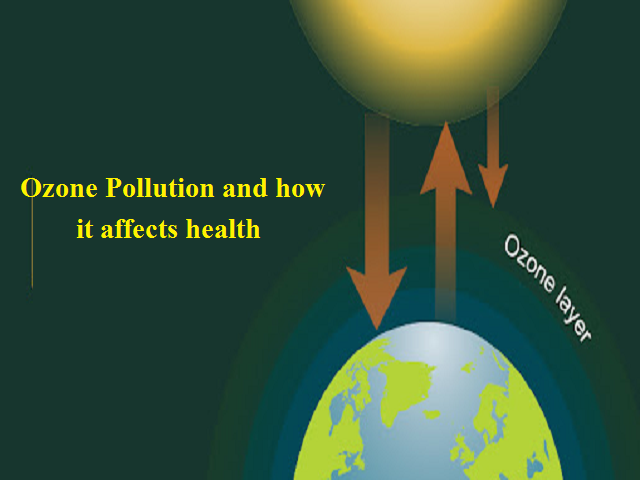World Ozone Day 2021: About Ozone Pollution and how it affects health

World Ozone Day 2021: It is observed on September 16 and is also known as International Day for the Preservation of the Ozone Layer. The day focuses on global attention for the preservation of the ozone layer.
According to the United Nations, Ozone layer is 'a fragile shield of gas that protects the Earth from the harmful portion of the rays of the sun, thus helping preserve life on the planet.'
When pollutants contaminate the natural surroundings pollution occurs due to which lifestyle is adversely affected. Or we can say that pollution is the process of making land, water, air dirty and not safe to use. Pollution is increasing day by day and it is necessary to take some measures. Due to global warming UV rays from the sun started penetrating the earth which further affects life and causes serious damage to the skin. It happens due to the hole in the Ozone which is a layer or a blanket around 6-30 miles above the surface of the Earth.
Ozone is made up of three atoms of oxygen. It is a highly reactive gas and is represented as O3. It occurs naturally as well as a man-made product in the Earth's upper atmosphere i.e. stratosphere and lower atmosphere i.e. troposphere.
Naturally, it is formed through the interactions of solar ultraviolet (UV) radiation with molecular oxygen O2. It reduces the harmful UV radiation reaching the Earth's surface.
But at the ground level ozone is considered a major air pollutant. We all know that ozone protects us from harmful UV radiation but ozone at ground level is dangerous and causes pollution. Let us study Ozone pollution and how it affects health.
Types of ozone
As discussed above ozone occurs both in the upper atmosphere of the Earth and at ground level. It can be good or bad depending on where it is found.

Source: www.deq.state.ok.us.com
Good Ozone: Occurs naturally in the upper atmosphere of the Earth and is also known as stratospheric ozone. Here, it forms protective shields that protect us from the sun's harmful UV radiation. Due to various manmade chemicals, it is partially destroyed and causes a hole in the ozone.
Bad Ozone: It is ground-level ozone that is not directly emitted into the air and is known as Tropospheric ozone. It is generated by the chemical reactions of nitrogen oxides and volatile organic compounds (VOC). This happens when the pollutants are emitted by cars, power plants, industrial boilers; chemical plants, etc. and these chemicals react in the presence of sunlight. Do you know that at ground level it is harmful to air pollutants because it affects people and the environment and also is the main ingredient in smog?
In urban areas on hot sunny days, ozone reaches unhealthy levels and can reach high levels during cold weather. Now, you may be thinking that in rural areas this ozone reaches or not? Yes in rural areas also ground-level ozone is transported by the wind and can experience high ozone levels.
Now let us study from where Ozone comes?
In the atmosphere, ozone develops from the gases coming out of smokestacks, tailpipes, etc. When these gases come in contact with the sunlight, they react and form smog (ozone).
When nitrous oxide and hydrocarbons i.e. VOCs react with the sunlight ozone is formed. From power plants, motor vehicles, and other high-heat combustion sources, NOx is emitted. And VOx is emitted from motor vehicles, chemical plants, refineries, factories, paint, etc. Carbon monoxide is also emitted from motor vehicles. If the ingredients are present under the right conditions, they react to form ozone. In addition, winds can carry ozone far from where it began, even internationally across borders and even the oceans.
From ozone pollution who is at risk?
People suffering from lung diseases like asthma and chronic obstructive pulmonary disease also known as COPD, which includes emphysema and chronic bronchitis, outdoor workers, children, older adults, etc. are more at risk. Some evidence suggests that other groups including women, people who suffer from obesity, and people with low incomes may also face a higher risk from ozone. People with certain genetic characteristics and people with reduced intake of certain nutrients such as vitamin C and E are at greater risk from ozone exposure.
Effects of ozone on health and environment
- Breathing ozone can cause chest pain, coughing, throat irritation, and airway inflammation.
- Reduced the functioning of the lung.
- Ozone worsens bronchitis, emphysema, asthma, etc.
- Increases the risk of respiratory infection and susceptibility to pulmonary inflammation (COPD).
- Breathing ozone can shorten your life that is premature death.
- It can cause cardiovascular diseases i.e. inhaling ozone may affect the heart.
- Air pollutants present in the air make the lungs more responsive to ozone and when you breathe ozone increases your body to respond to other pollutants. For example, a study published in 2009 found that children were more likely to suffer from hay fever and respiratory allergies when ozone and PM2.5 levels were high.
- Continue to damage the lungs even when the symptoms have disappeared.
- Ozone causes harm to vegetation and ecosystems including forests, parks, wildlife refuges, etc.
So, now we have come to know about the ozone and pollution caused by it. Also, what are the harmful effects of ozone on health and the environment?
No comments:
Post a Comment